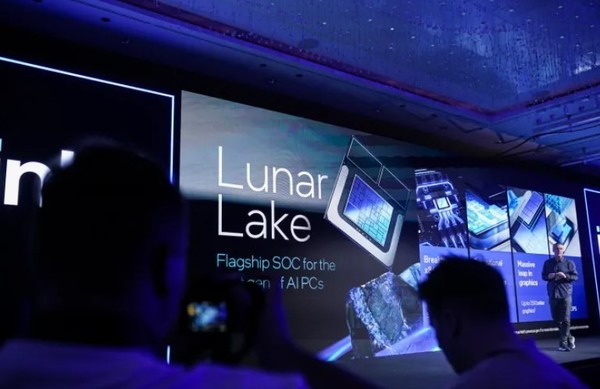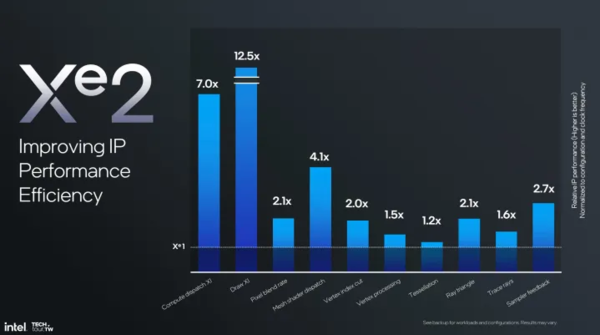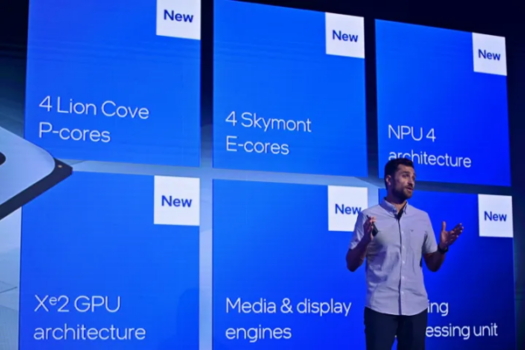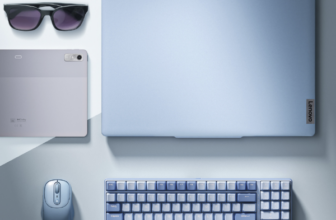[Tinydeal Technology]It is not an exaggeration to say that Lunar Lake is radical. This upcoming chip is different from the Intel products we’ve seen in the past – those chips that are constantly seeking the limits in power, core count, and clock frequency, but are confused as to why laptop battery life can’t last a full day. Lunar Lake chip marks Intel’s face-up to past limitations, rather than passive denial. Lunar Lake, unveiled at the 2024 Computex conference, is a new starting point for Intel.

Intel earlier described it as a “disruptive low-power architecture,” and that description is apt. At Lunar Lake, everything is designed around energy efficiency. With this new goal, Intel is freeing itself from the constraints of previous generations of products, discarding technology elements that no longer provide a benefit – even chips that require production in its fabs.
new focus
For Intel, a key to entering a new era is a new core architecture. Lunar Lake follows a similar hybrid architecture design to its predecessors, but places more emphasis on the Skymont high-efficiency (E) core and relatively reduces its reliance on the Lion Cove performance (P) core. According to Intel, Skymont is the core that drives Lunar Lake.
Intel emphasized that the E core will handle most of the computing tasks on Lunar Lake. Unlike previous generations, which relied on the E core only for low-power tasks, Lunar Lake assigns it a central role. The P core will activate only when users require additional performance, ensuring strong performance is available whenever necessary.

This design is precisely to achieve the performance goals mentioned earlier. In past generations, the E core might only be able to handle a single video stream or very lightweight tasks, while slightly more demanding applications like Microsoft Teams would trigger the P core. But on Lunar Lake, things have changed.
To achieve this transformation, Intel must enhance the performance of the E core. Intel has set requirements for Skymont’s performance: it must provide performance comparable to Meteor Lake’s E core while consuming one-third of the original power consumption. Under full load, single-core performance can double.

Intel said Skymont has an average improvement of 2% in instructions per clock cycle (IPC) compared to Raptor Cove. This is a comparison between the new E core for notebooks and the previous generation desktop P core, achieving a performance leap.
This pursuit of efficiency permeates every aspect of Lunar Lake. Intel designed separate voltage rails for the P and E cores, allowing the system to shut down the P core completely when it is not needed.
While Skymont is the core driver, the new Lion Cove core also focuses on efficiency improvements. One of the most significant, and perhaps most controversial, changes concerns Hyper-Threading technology. Lunar Lake does not use hyper-threading technology, either E-core or P-core. As Intel puts it: “Hyper-threading is not free.”
Production is handed over to TSMC
The key points here have shifted, but some of the changes Intel made with Lunar Lake are more intuitive. Intel has always designed and produced its CPUs. But with the Lunar Lake generation, Intel decided to outsource production tasks to chip manufacturing giant TSMC, which also manufactures chips for companies such as Apple, AMD, and Nvidia.

Lunar Lake’s core computing module will use TSMC’s N3B process, while the platform module will use the N6 process. N3B is a cutting-edge technology node, and Intel currently does not have a corresponding level of process. Instead, Intel is focusing on its slightly smaller 18A node, which it expects to launch next year.
Although TSMC is responsible for producing Lunar Lake, Intel emphasized that this is not out of necessity. Intel emphasizes that this design does not depend on specific intellectual property rights or production layouts, allowing any capable manufacturer to produce it. This approach reflects Intel’s global manufacturing strategy, which aims to distribute production capabilities worldwide rather than concentrating them in one region.
Specification
At the heart of Lunar Lake is an eight-core CPU, consisting of four high-efficiency E-cores and four high-performance P-cores. Intel says the design is capable of scaling to higher levels but will remain a quad-core configuration. Although the specific model has not been revealed, the specific configuration is still a mystery.
Lunar Lake has significant upgrades in other areas as well. To meet the needs of Copilot+ PCs, Intel redesigned its neural processing unit (NPU). It now has 48 trillion operations per second (TOPS) of processing power, more than four times that of Meteor Lake and even slightly ahead of the Snapdragon X Elite.

But that’s not Lunar Lake’s only smart boost. In total, it has more than 120 platform TOPS of computing power. With the new Xe2 graphics architecture, the NPU can provide 48 TOPS, the CPU contributes 5, and the GPU provides 67 TOPS.
The name Xe2 may be more familiar to you as its code name of “Battle Mage”. Intel has also adopted the Xe2 graphics architecture, known by its code name “Battle Mage,” for Lunar Lake and its next-generation desktop graphics cards. This architecture reportedly improves performance by 50% compared to the previous generation.
These advancements stem from various architectural enhancements. For instance, the architecture now supports the ExecuteIndirect instruction, a critical component for DirectX 12 games. This instruction alone can boost performance by over 12 times in certain scenarios.
This alone can bring more than 12 times performance improvement in some cases. Intel has also introduced new compression technology and a faster cache-cleaning mechanism to further improve efficiency.

The CPU, GPU, and NPU form the core of the Lunar Lake chip. However, it includes much more as a complete system-on-chip (SoC). It features a display engine supporting DisplayPort 2.1 and HDMI 2.1. Its media engine supports AV1 and the new VVC codec. Lunar Lake also supports up to 32GB of LPDDR5X memory.
The chip’s full potential remains unknown until it appears in actual devices. Many details, like clock speeds and power consumption, are still unclear. Intel is focused on architecture, while AMD and Qualcomm showcase finished products. The Lunar Lake chip’s performance will test Intel’s strategic shift.
One thing is clear: Intel is entering a new era. Meteor Lake was a step forward, but Lunar Lake adds deeper significance. Its streamlined core design, focus on efficiency, and use of cutting-edge process nodes redefine Intel’s image. Lunar Lake chip represents not just a new product generation but a bold transformation.
Explore more at the TinyDeals store.





